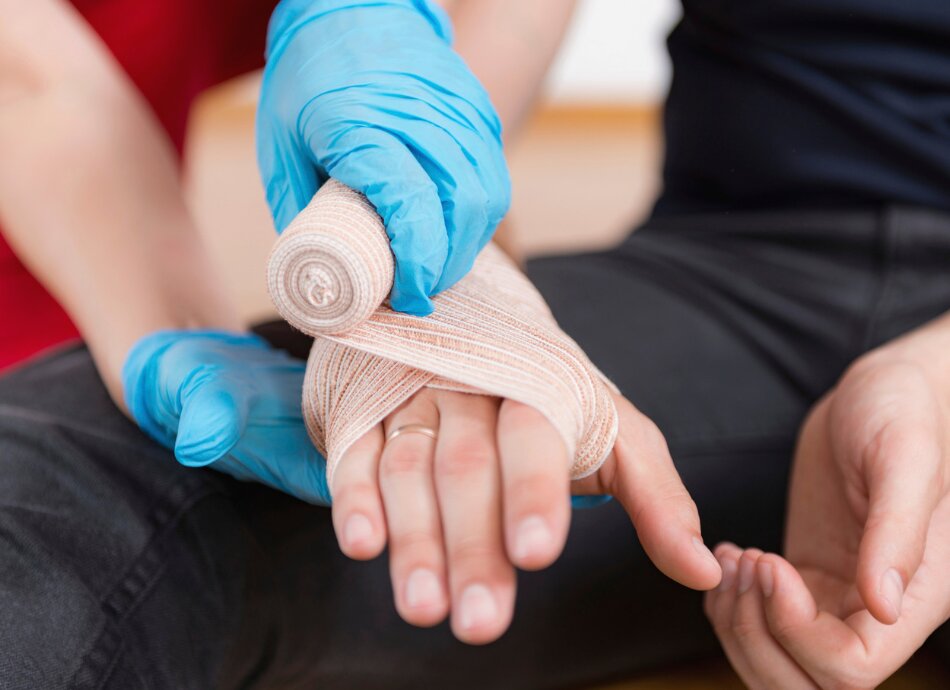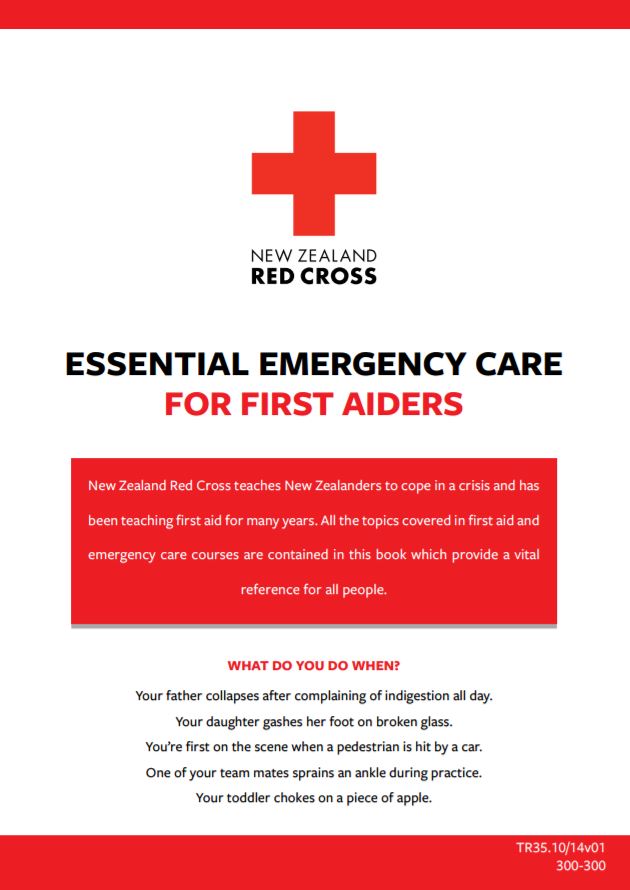Bleeding – what to do
Key points about bleeding
- Whether it’s a minor graze or a deep, nasty gash, seeing blood can be a shock for both the person hurt and anyone who is nearby.
- While bleeding from an accident is usually minor, sometimes it can be life-threatening, especially if a large vein (such as the jugular vein in your neck) or an artery has been injured.
- This page provides advice on what to do when someone is bleeding and when to get help.

Generally with external bleeding, the bleeding is minor and includes things like small cuts and grazes. Sometimes, wounds are associated with other injuries under your skin, such as a broken bone that has pierced the skin. Here's how you can help:
Apply pressure
- Apply firm pressure over the wound using sterile or clean bulky padding.
- Use a bandage to keep the dressing in place.
- If the bleeding is severe, don’t waste time looking for padding, use the patient’s hand or your own to hold the wound together.
Raise the injured area
- If the wound is on a limb, raise it into a supported position to reduce blood flow to the area.
- If the arm is injured, you could use a makeshift sling.
Do NOT remove foreign objects
- Apply padding on either side of the object and build it up to avoid pressure in the object.
- Hold the padding firmly in place with a roller bandage or folded triangular bandage applied in a criss-cross shape to avoid pressure on the object.
Keep the person rested
- Make sure the person is rested in a comfortable position for at least 10 minutes to help control the bleeding.
Seek medical help
- If the wound is minor and the patient can travel by car, see a doctor to assess and treat the injury.
- If the injury is serious and the patient is unwell, call 111 for an ambulance and keep a close eye on them for any change in condition.
If blood leaks through the padding or bandage:
- Apply a second pad over the first. Use a tea towel or similar bulky fabric and apply maximum pressure to the area.
- For major, uncontrolled bleeding quickly remove the blood-soaked padding and bandage and replace with fresh padding and bandages (the continuing bleeding may be due to the padding slipping out of position when the first bandage was applied).
Video: How to Treat Severe Bleeding - First Aid Training - St John Ambulance
This video may take a few moments to load.
(St John Ambulance, 2016)
- Gently clean the area with soapy water or a saline solution (salt and water).
- If there are stones or gravel stuck in the graze, ask the person to get them out while the area is soaking in soapy water.
- Blot the area dry with gauze swabs or tissues.
- If needed, apply a non-sticky, sterile dressing and fix it in place with a light roller bandage or tape.
Read more about first aid for cuts and grazes.
Health visitor Naresh Lane explains what to do if a young child is cut or bleeding.
How do I deal with cuts and bleeding (12 to 30 months)
This video may take a few moments to load.
(NHS Choices, UK, 2015)
A puncture wound is a deep wound caused by something sharp and pointed, such as a nail.
- Clean the wound with warm soapy water, allowing the water to get into the puncture wound.
- Allow the wound to dry thoroughly before covering it.
- If a dressing is needed, use a porous adhesive dressing and change it daily to keep the wound healthy and dry.
Wounds can become infected with tetanus bacteria, which is life-threatening. Deep wounds containing dirt or foreign objects are the most likely to become infected with tetanus. Contact your GP or nearest A & E about getting a tetanus vaccination after an injury.
Tetanus can also occur after a minor injury that might not have been noticed at the time, so it’s important to keep up regular tetanus vaccinations.
If a body part, such as a finger, is amputated (cut off) call 111 immediately for an ambulance.
- Use a bulky pad and apply it firmly to the bleeding area and raise the injured area.
- If possible, carefully place the body part in a plastic bag and seal the bag with a little air inside to protect it with a ‘cushion’ of air.
- Place the bag in a bucket of cold water with several ice cubes in the water.
- Make sure the amputated part is taken to hospital with the patient.
Crush injuries happen when part of your body is crushed by a heavy weight. The most serious parts of your body for a crush injury to occur are your head, neck, chest, abdomen and thighs. If a crush injury happens call 111 immediately for an ambulance.
- If possible, remove the crushing force as permanent damage may occur.
- If the crushing force has been in place for some time, be prepared to give first aid straight away because removal of the force may cause a sudden collapse or deterioration in the person’s condition.
- Assess and treat injuries in order of importance.
- Control bleeding with a sterile padding applied firmly to the injured area.
- Get the patient into a comfortable position to support the injured area.
- While waiting for the ambulance watch the person closely for any change in condition.
Try to avoid direct contact with a person’s blood, whatever the injury. Use disposable gloves if they are available or put your hands inside some plastic bags. If you do come into contact with their blood or other body fluids, take these steps:
- Wash your hands (and anywhere else that has come into contact with blood) thoroughly with soap and water as soon as possible after the incident.
- If you’re worried about a possible risk of infection, contact your GP as soon as possible for advice.
Bleeding(external link)(external link) St John, NZ
Apps
Resources
Essential emergency care for first aiders(external link)(external link) Red Cross, NZ, 2014
Cuts, scratches and grazes(external link)(external link) Health Literacy NZ
Protect against tetanus, diphtheria and whooping cough - consent form(external link) HealthEd, NZ, 2023 Chinese simplified(external link)(external link), Chinese traditional(external link)(external link), Cook Islands Maori(external link)(external link), English(external link)(external link), Hindi(external link)(external link), Māori(external link)(external link), Samoan(external link)(external link), Tongan(external link)(external link)
Brochures

Red Cross, NZ, 2014

Health Literacy NZ
Credits: Healthify editorial team. Healthify is brought to you by Health Navigator Charitable Trust.
Page last updated:





